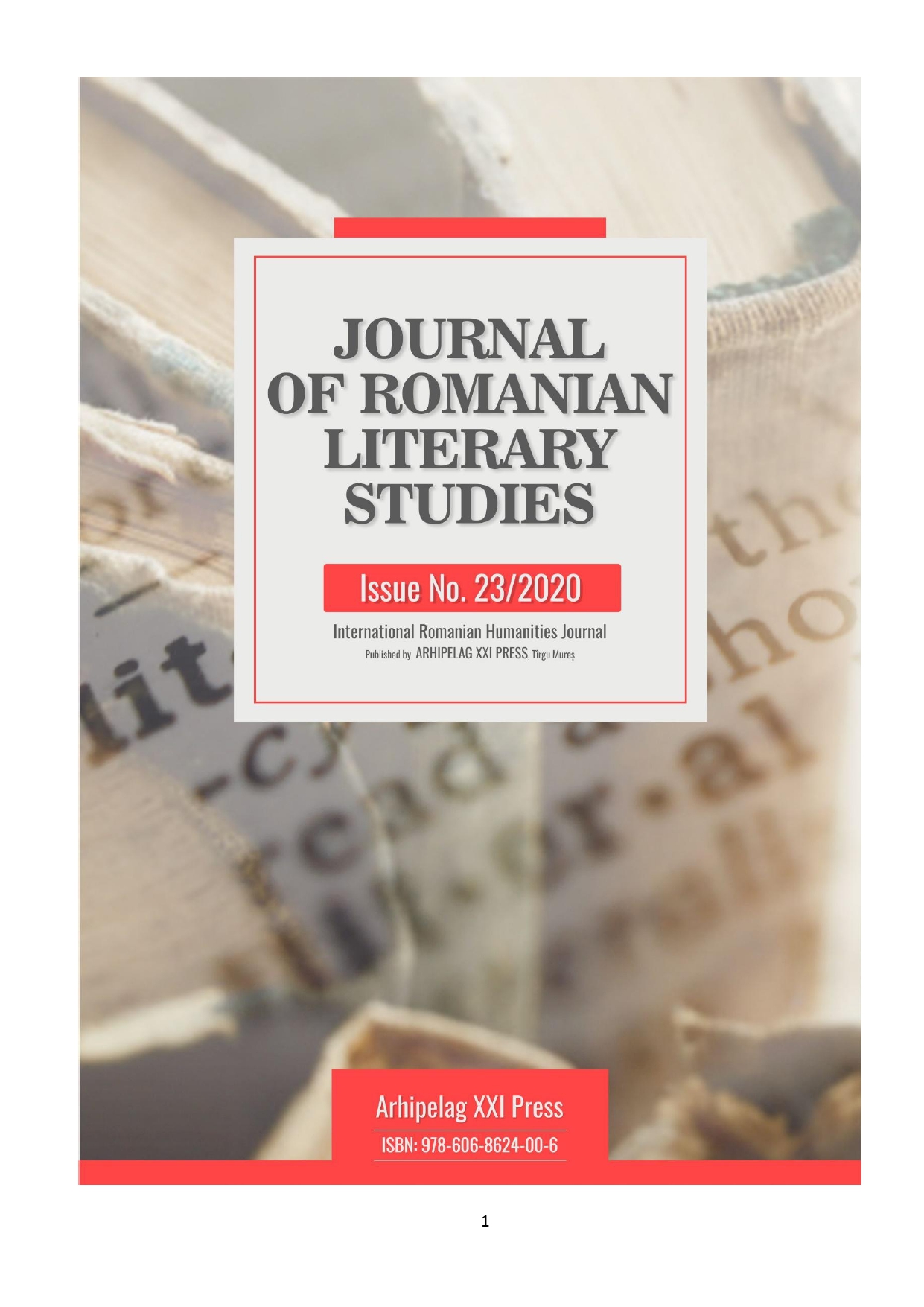PERIODIZATION OF ROMANIAN ROMANTICISM
PERIODIZATION OF ROMANIAN ROMANTICISM
Author(s): Alexandra-Măriuca CîrsteaSubject(s): Literary Texts, Romanian Literature, Philology, Theory of Literature
Published by: Editura Arhipelag XXI
Keywords: periodization; romanticism; the history of romanticism;
Summary/Abstract: The periodization of the Romanian romanticism as well as its propagation is related to numerous factors, both social and cultural. According to H. Stanielevici, romanticism would appear "as an artistic reflection of the inability of elites to promote progress", hence the concept of romanticism of "laziness", "despair", "dehumanization", which appear as a result of failure to adapt. There are no dissociations between “the passive, conservative and revolutionary romanticism, active, self-confident, but unprepared to work together to transform it. Regarding the periodization of Romanian romanticism, it should be noted that this does not succeed the periodization of Western romanticism, which is why Pompiliu Constantinescu argues that: „the romanticism of the spirit from 1848 is an uninterrupted allegory of the national, while, through Eminescu, romanticism designates its purely aesthetic finalities ”. Moreover, wanting to establish a periodization starting from the premise "period and representative personality", Zoe Dumitrescu Buşulenga wants to consider the period 1848, as one of a great ideological load, following a period of searches and reaching perfection with Eminescu, who he sees in the poet a kind of end of romanticism not only Romanian, but also European. However, romanticism will exist after Eminescu for at least another two decades. Therefore, it is necessary a periodization that includes certain stages of manifestation - which Eugen Simion calls "waves", respectively: a first phase of initiation (1821-1848) represented by V. Cîrlova, Grigore Alexandrescu. A second stage is a "fighting" one that manifests itself through Bălcescu, Bolliac, Bolintineanu, Kogălninceanu, Russo, Alecsandri. The third stage is one of artistic perfection (1866-1889) represented by Eminescu. And a last phase (1889-1904) targets Odobescu, Hasdeu, Macedonski, Delavrancea, Vlahuţă, Sadoveanu and Octavian Goga. Summarizing, Eugen Simion establishes three waves: "the first is an elegiac one, represented by Cîrlova, Grigore Alexandrescu, the second is a deep messianic one, dominated by patriotism and represented by Bălcescu and Alecsandri, and a third wave is represented by Eminescu". Therefore, those who manifest after Eminescu complete the history of romanticism and almost their artistic manifestation is a bipolar one: Macedonski, Delavrancea, Hasdeu, romantics and critical realists, and Duiliu Zamfirescu, Coşbuc, Slavici, romantics and classics.
Journal: Journal of Romanian Literary Studies
- Issue Year: 2020
- Issue No: 23
- Page Range: 772-778
- Page Count: 7
- Language: Romanian

